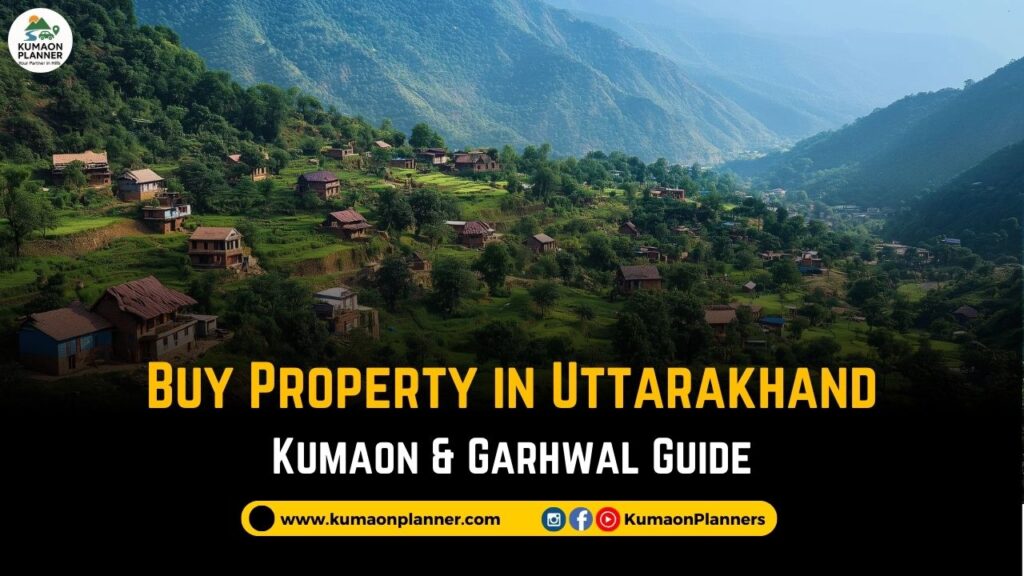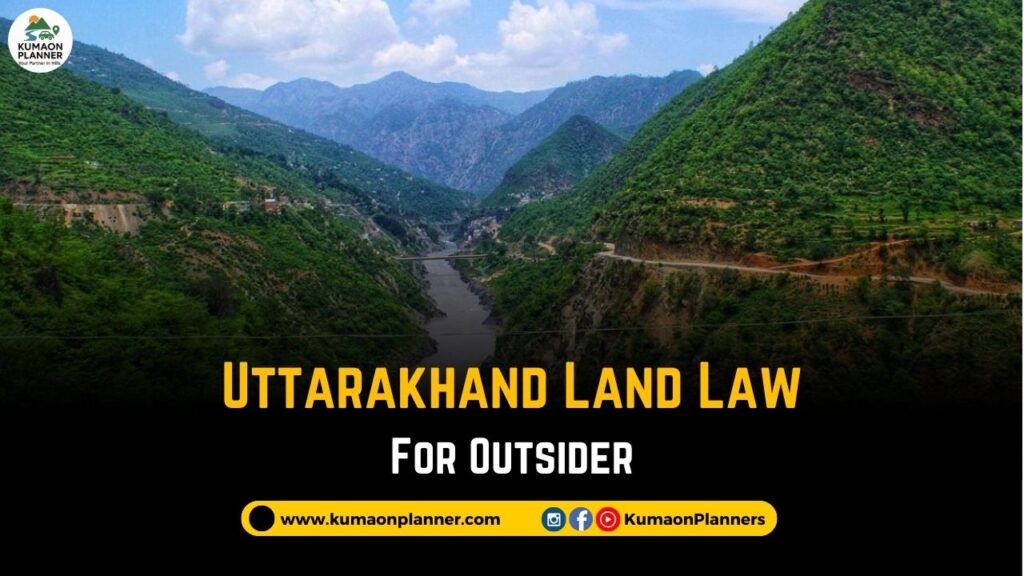The lush hills of Uttarakhand attract not just tourists but also investors who dream of owning agricultural land here. People want land for:
- Farming – organic crops, orchards, herbal plantations.
- Eco-homes – farmhouses, homestays, retirement homes.
- Investment – land appreciation in areas like Nainital, Mukteshwar, and Almora.
But unlike residential property, buying agricultural land in Uttarakhand is not straightforward. There are restrictions, especially for outsiders who are not registered agriculturists. If you are planning to invest, you must understand the legal rules, costs, and step-by-step process.
1. Legal Framework You Must Know
Agricultural land in Uttarakhand is still governed by laws from Uttar Pradesh Zamindari Abolition & Land Reforms Act, 1950, which apply even after statehood.
- Who can buy?
- Local agriculturists and farmers can buy agricultural land.
- Outsiders (non-agriculturists) usually cannot buy without special permission or land conversion.
- Ceiling laws:
There is a maximum limit on how much agricultural land one family can hold (varies by district). Buying beyond this limit is illegal. - Restrictions for outsiders:
- Non-agriculturists need to apply for permission under Section 143 to convert land for residential or commercial use.
- Direct agricultural purchase is not allowed unless exceptions apply.
Understanding these rules is the first step to avoid disputes and fraud.
👉 Here is the complete mutation process in Uttarakhand.
2. Step-by-Step Process
Here’s the clear step-by-step guide for buying agricultural land in Uttarakhand:
Step 1: Identify Land Type
- Check whether the land is classified as agricultural, residential, or commercial.
- If agricultural, see if conversion to residential is possible.
Step 2: Verify Ownership & Title
- Ensure the seller is the recorded bhumidar (landholder).
- Take certified copies of title deed, khasra, and khatauni.
Step 3: Mutation & Khasra-Khatauni Check
- Confirm the land is mutated in seller’s name.
- Verify from Bhulekh Uttarakhand online portal.
Step 4: Apply for Permission (if non-agriculturist)
- Non-agriculturists must take SDM/DM approval.
- In some cases, Section 143 permission is mandatory to use land for non-agricultural purposes.
Step 5: Draft Agreement to Sale
- Prepare an agreement mentioning advance, timelines, and conditions.
- Always register it with local registrar office.
Step 6: Registry Process
- Execute the Sale Deed at the Sub-Registrar office.
- Pay stamp duty and registration charges (calculated on circle rate).
Step 7: Mutation Post-Purchase
- Apply for mutation so that your name reflects in government records.
- Without mutation, you are not the legal owner.
3. Key Documents Required
When buying agricultural land, keep this document checklist handy:
- Draft of Sale Deed.
- NOC (No Objection Certificate) from revenue or tehsil office.
- Seller’s ID proof, photographs, affidavits.
- Encumbrance certificate (to ensure no loan/claim on land).
- Power of Attorney (if seller is represented by someone else).
👉 Here is a Complete Guide on Documentation Checklist for Buying Property in Uttarakhand
4. Costs Involved
While agricultural land looks cheaper on surface, these costs add up:
- Stamp Duty & Registration Charges:
- Around 5–7% of circle rate (varies by buyer’s gender and area).
- Mutation Fees:
- Small administrative fee for updating records.
- Conversion Charges (if applicable):
- If you plan to convert land for residential use, additional charges apply under Section 143.
👉 Read guide on Stamp Duty & Registration Fees in Uttarakhand
5. Risks & Challenges
Buying land in Uttarakhand comes with risks. Be aware of:
- Benami transactions: Property held in someone else’s name.
- Land ceiling violations: Buying more than legally allowed.
- Fake documents or disputed ownership: Double sales are common in hill areas.
- Forest land confusion: Some land is wrongly sold though it falls under forest category.
👉 Here is How to Verify Property Ownership & Avoid Land Fraud in Uttarakhand
6. Pro Tips Before Buying
To avoid mistakes, follow these expert tips:
✅ Hire a local lawyer: For legal due diligence and revenue records check.
✅ Check road access & water availability: Land without road access faces resale and construction issues.
✅ Look for upcoming projects: Locations near tourist hubs (Mukteshwar, Bhimtal, Almora) or near highways appreciate faster.
✅ Cross-check with neighbors: Locals often know hidden disputes.
Conclusion
Buying agricultural land in Uttarakhand can be rewarding and profitable, but only if you follow the law and complete due diligence. Avoid shortcuts, verify every document, and always take local legal guidance.
👉 Explore more in our Legal Guide Blogs and Construction Guides to plan your next step.
Non-agriculturists usually cannot buy agricultural land directly in Uttarakhand. They must either seek special permission or purchase converted land under Section 143.
Section 143 allows conversion of agricultural land into residential or commercial use with approval from revenue authorities. Here is the full guide on sec 143
Key documents include Sale Deed, NOC, identity proof, affidavits, khasra-khatauni, and encumbrance certificate.
QUICK CONNECT
For Any Other Query or Service Contact us here.




